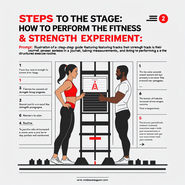
Goal Setting
The Fitness and Strength Experiment:
Primary and Secondary Outcomes
Each experiment in the Lifestyle Experiment (Sugar, Fitness, Sleep, and Food) includes primary and secondary outcomes to measure changes over time.

Primary outcomes are usually short-term, responsive metrics that are the most likely to change as a result of the intervention. Good choices for the fitness and strength experiment include:
✅ Vo2 Max ✅ Grip Strength ✅ Chair Stand Test ✅ 1-Rep Maximum Strength ✅ Muscle Mass (if available)

Secondary outcomes are usually long-term health indicators that may or may not change within the proposed timeframe but if they do, its a bonus. Good secondary outcome choices for the fitness and strength experiment include:
Body fat percentage Waist Circumference HbA1c (Blood sugar control) Fasting Glucose Fasting Insulin Level Triglycerides LDL (Low-Density Lipoprotein – “Bad” Cholesterol) HDL (High-Density Lipoprotein – “Good” Cholesterol) hsCRP (High-Sensitivity C-Reactive Protein – Inflammation Marker)

Writing Your Hypothesis Statement
statement should reflect your current fitness level and metabolic markers, along with a clear action plan for improvement. Example: Starting Point Statement “After completing the Sugar Experiment, I still have prediabetes with HbA1c of 5.8, and my body fat percentage has remained at 26%. My estimated VO2 max is 27, and my grip strength is 28 kg, which is low for my age of 62.” Example: Hypothesis Statement 1 “By increasing the intensity and duration of my cardiovascular routine to 8 METS for 180 minutes per week and by adding a weekly weightlifting session, I can improve my fitness level to a VO2 max of 30 and grip strength of 30 kg in both hands over a 3-month period.” Example: Hypothesis Statement 2 “By improving my fitness level and grip strength over a 3-month period, I can reduce my body fat percentage to 24% and lower my HbA1c to 5.6.” How to Create Your Own Hypothesis Statement 🔹 Step 1: Define your current fitness and metabolic status (use your VO2 max, strength tests, HbA1c, and body composition). 🔹 Step 2: Write a goal that includes specific improvements in fitness, strength, and metabolic markers. 🔹 Step 3: Set a timeframe for achieving these changes (typically 3 months).






